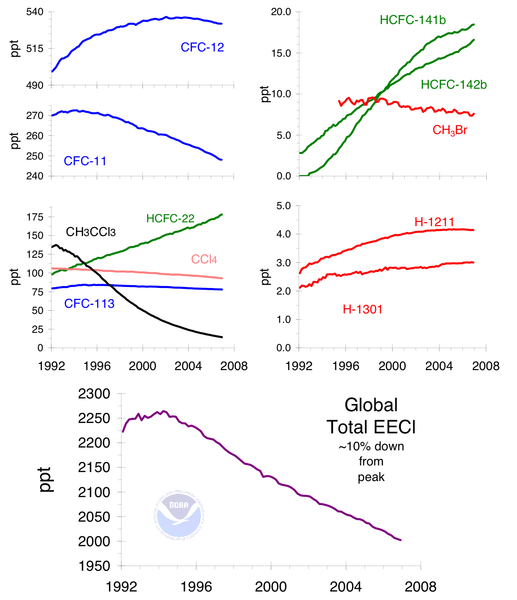Berkas:Ozone cfc trends.png

Ukuran pratayang ini: 517 × 600 piksel. Resolusi lainnya: 207 × 240 piksel | 414 × 480 piksel | 662 × 768 piksel | 1.096 × 1.271 piksel.
Ukuran asli (1.096 × 1.271 piksel, ukuran berkas: 123 KB, tipe MIME: image/png)
Riwayat berkas
Klik pada tanggal/waktu untuk melihat berkas ini pada saat tersebut.
| Tanggal/Waktu | Miniatur | Dimensi | Pengguna | Komentar | |
|---|---|---|---|---|---|
| terkini | 2 Oktober 2016 22.00 |  | 1.096 × 1.271 (123 KB) | Cmdrjameson | Compressed with pngout. Reduced by 46kB (27% decrease). |
| 6 Oktober 2009 04.11 |  | 1.096 × 1.271 (169 KB) | Robert Skyhawk | Updated information current to 2008. Upload requested by English Wikipedia user Tobus2 via Images for Upload. | |
| 15 Januari 2006 19.38 |  | 1.139 × 1.577 (24 KB) | Maksim | La bildo estas kopiita de wikipedia:en. La originala priskribo estas: CFC gas trends and equivalent chlorine effect. Combined chlorine and bromine in the lower stratosphere (10-25 km), where most ozone loss occurs, leveled off around [ |
Penggunaan berkas
3 halaman berikut menggunakan berkas ini:
Penggunaan berkas global
Wiki lain berikut menggunakan berkas ini:
- Penggunaan pada bg.wikipedia.org
- Penggunaan pada ca.wikipedia.org
- Penggunaan pada el.wikipedia.org
- Penggunaan pada en.wikipedia.org
- Penggunaan pada eo.wikipedia.org
- Penggunaan pada es.wikipedia.org
- Penggunaan pada eu.wikipedia.org
- Penggunaan pada fi.wikipedia.org
- Penggunaan pada fr.wikipedia.org
- Penggunaan pada gu.wikipedia.org
- Penggunaan pada hi.wikipedia.org
- Penggunaan pada kn.wikipedia.org
- Penggunaan pada pt.wikipedia.org
- Penggunaan pada simple.wikipedia.org
- Penggunaan pada ta.wikipedia.org
- Penggunaan pada zh.wikipedia.org


